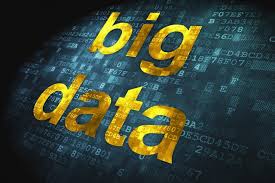
Researchers and business users alike analyze big data in order to glean insights as to what customers actually want and need.
 Data has value and companies can't live without it, but just how much is data worth? How much does it cost to analyze big data and derive value from it? In the past, technologists provided upper management with historical data so they could spot market trends.
Data has value and companies can't live without it, but just how much is data worth? How much does it cost to analyze big data and derive value from it? In the past, technologists provided upper management with historical data so they could spot market trends.
Statistics -- while useful for getting high-level views of market trends and for how an organization is doing in the market -- are not sufficient for determining what new products and services to create. These statistics don't tell what customers actually want. Analysts, researchers and business users analyze big data to make better and faster decisions. Using advanced analytics techniques, such as text analytics, machine learning, predictive analysis, data mining and statistics, businesses can analyze previously untapped data. Companies generate large amounts of data and have the capability to collect information from other sources, such as mobile applications, sensors, websites, clickstream data and social media activity. This data can be turned into a product. Collecting and analyzing large amounts of data, primarily unstructured data, is not an easy task. Current company systems are not equipped to process 500 terabytes of data per week to glean the nuggets that can help companies create new products and services that customers want. This has led companies to look at high-performance computing (HPC) resources capable of solving problems, such as weather and climate forecasting, parametric modeling and stochastic modeling to process huge amounts of commercially oriented data. Big data analytics is the use of analytic techniques against very large, diverse data sets that include different data types such as structured/unstructured data, streaming or batch data, and different sizes that vary from terabytes topetabytes to zettabytes. It examines different data types to uncover hidden patterns, unknown correlations and other useful information. The aforementioned information can provide competitive advantages over rival organizations and result in business benefits, such as more effective marketing and increased revenue. High-performance data analysis (HPDA) is the term adopted to describe the conversion of the data-intensive HPC market and the high-end commercial data analytics market.
Source: searchsoa.techtarget.com




